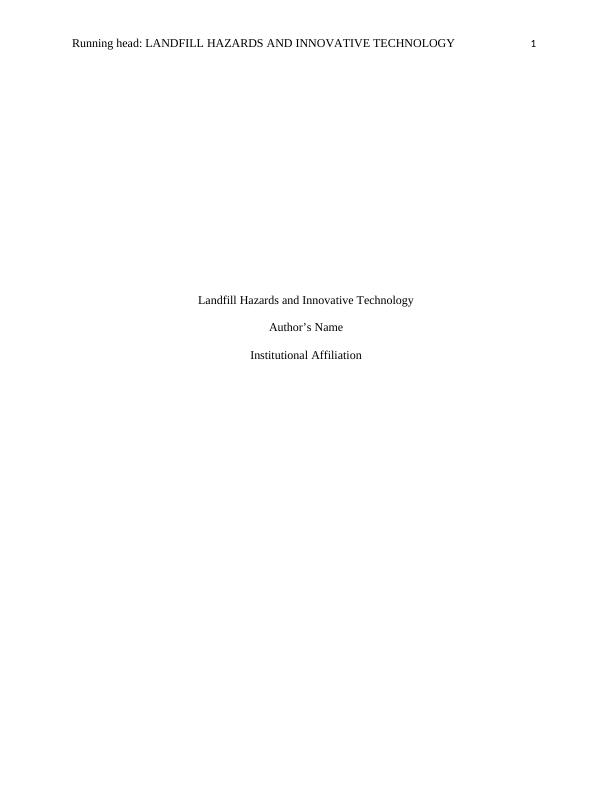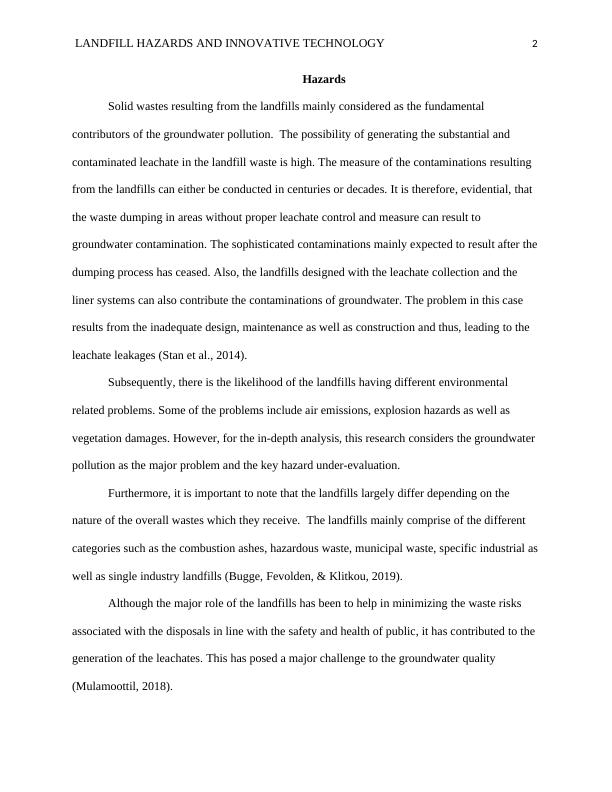Landfill Hazards and Innovative Technology
8 Pages2107 Words65 Views
Added on 2023-01-23
About This Document
This article discusses the hazards of landfills, particularly groundwater pollution resulting from leachate contamination. It explores the different types of landfills and their environmental problems. Additionally, it delves into innovative technologies such as air stripping and ozonation for leachate treatment.
Landfill Hazards and Innovative Technology
Added on 2023-01-23
ShareRelated Documents
End of preview
Want to access all the pages? Upload your documents or become a member.
Solid Waste Management: Methods and Effects
|12
|924
|263
Impact of Plastic on Environment
|8
|1754
|37
Assignment on Water Pollution PDF
|8
|3174
|144
Surname 1. Landfills Student’s Name Subject Date. Surna
|8
|1483
|424
Waste Management and Resource Efficiency in Licensed Facilities
|7
|1998
|348
Energy to Waste
|13
|2346
|84



